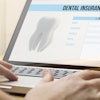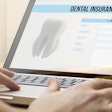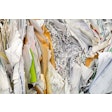A new forensic dental data supplement enables dental offices and municipalities to share information between compatible systems, according to an ADA News story. These records are critical to missing persons investigations, disaster recovery identification efforts for transportation accidents, terrorist attacks, and other incidents in which dental records are used for identification.
The Information Technology Laboratory (ITL) added the dental data supplement to the data format for the Interchange of Fingerprint, Facial & Other Biometric Information. The ITL is part of the National Institute of Standards and Technology (NIST).
Like fingerprints and DNA, dental data will now have a communication protocol for interaction and interoperability among the various forensic dental repositories and systems deployed internationally. The supplement standardizes the transmission methodology of familial dental data, dental history data, tooth data, mouth data, radiological data, visual images, and other dental biometric information.
Working with the American National Standards Institute/NIST-ITL, the ADA Standards Committee on Dental Informatics produced the forensic dental data supplement, based on the ANSI/ADA Standard 1058 -- Forensic Dental Data Set. The supplement also covers other items used in forensic work, such as patterned injury imagery (for example bite marks), cheiloscopy (lip prints), and CT and cone-beam CT scans.
The standard will allow organizations to exchange data between municipalities and also gather data directly from dental offices, even though each system uses unique encodings that are not mutually compatible. Organizations that could use the standard and their systems include the FBI National Crime Information Center Dental Image Repository, the Department of Justice National Missing and Unidentified Persons System, INTERPOL FastID Disaster Victim Identification System, the New York City Medical Examiner's Office, and other municipalities.
For more information about the standard and the standards development process and for a copy of the standard, visit the NIST website.















